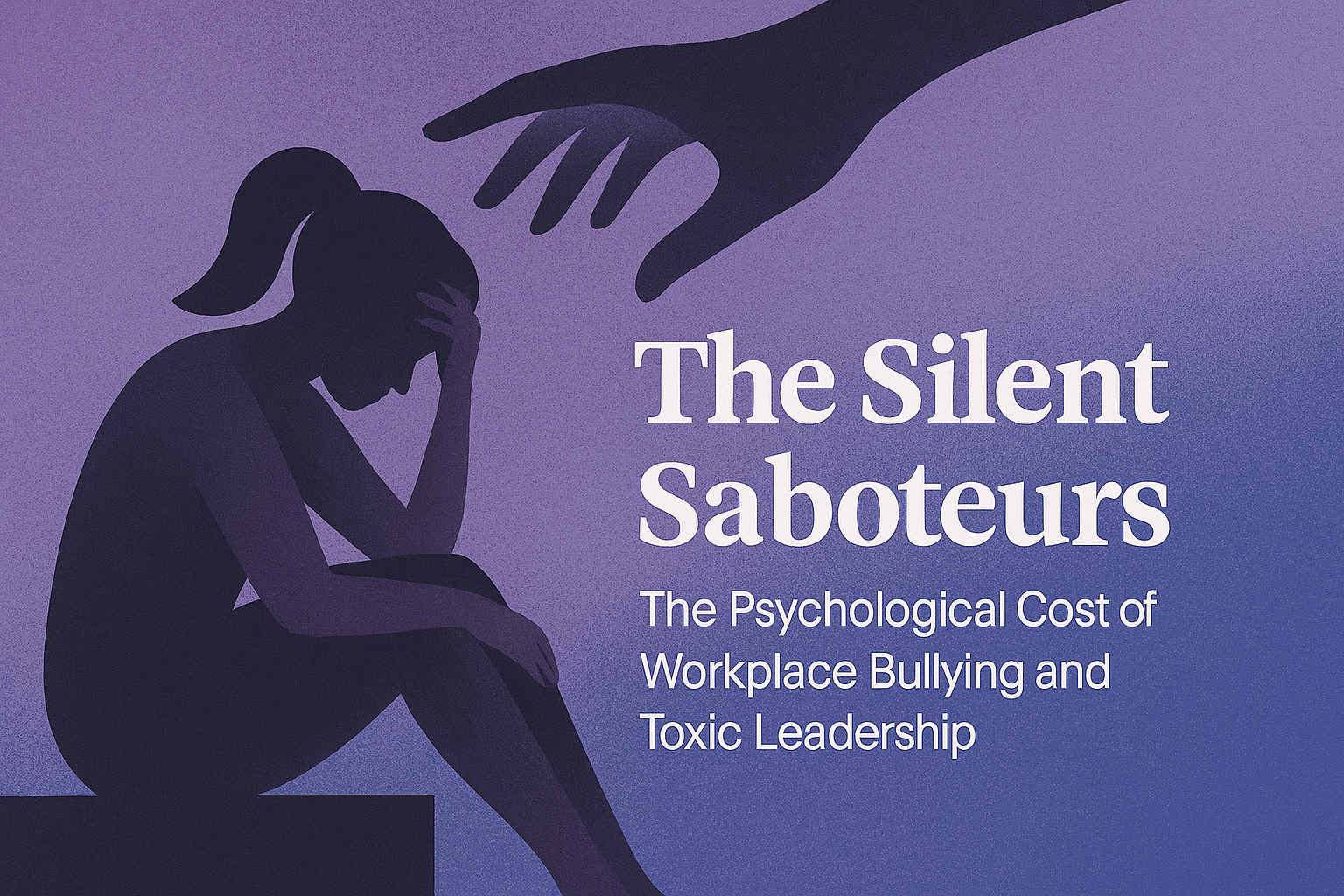Workplace bullying and toxic leadership are the silent epidemic lurking within organizations, capable of gradually destroying morale, constraining innovation, and even ending careers.

Its presence is often hidden behind charming facades, yet its crippling influence spreads like wildfire, leaving a trail of frustrated employees and dysfunctional team dynamics.
It is a shadowy force transforming teams into battlegrounds or slave houses and organizations into toxic environments.
Uncovering the roots of toxic leadership and bullying at the workplace reveal a complex web of power, ego, and unchecked behavior that can threaten the very foundation of success making it a phenomenon every leader and subordinate must understand and collectively or individually confront.
A number of years ago, I worked in a supposed well structured organization and experienced toxic leadership first hand; from being relegated to the background and my name eluded during profit sharing and reward seasons despite achieving success as a team with my viable inputs, to not being recommended for periodic trainings which would have expedited promotion opportunities for me, while the team lead’s preferred staff enjoyed all the privileges and documented commendations . My limited knowledge and understanding of what workplace bullying and toxic leadership was at the time, deterred me from reporting the actual bullying and toxic display incidences to the appropriate quarters, and besides, I wasn’t certain if we had policies in place to address the issues related to that since there was no mention of that during the induction training I received when I joined the organization. Sometimes, toxic leadership can escalate to physical and verbal abuse, so early understanding of these concepts is vital.
Workplace bullying can take many forms, including verbal abuse, exclusion, sabotage, and unreasonable workload assignments, such behaviors erode trust among employees and create a hostile work environment, leading to increased stress, mental health issues, and high turnover rates (Leymann, 1996). Toxic leadership characterized by traits such as narcissism, authoritarianism, and lack of empathy can exacerbate these problems by setting a damaging tone at the top (Schriesheim et al., 2016). Leaders with toxic traits often justify or overlook bullying behaviors, undermining organizational integrity.
Some of the signs of toxic leadership are :
- Micromanagement ; Constant control over minor details, lack of trust in team members to take initiatives or deliver efficiently on their assigned responsibilities
- Fear-based culture; People are afraid to speak up, make mistakes, or offer new ideas for fear of being bullied
- Blame-shifting; Leaders who avoid accountability and blame others for team failures.
- Favoritism; Unequal treatment, often rewarding loyalty over performance.
- Poor communication ; Withholding information, unclear expectations, or passive-aggressive messages.
- Lack of empathy; Disregard for team well-being, burnout, or personal challenges.
- Manipulation; Gaslighting, creating rivalries, or turning team members against each other.
Mitigating workplace bullying and toxic leadership requires a multi-faceted approach. Firstly, organizations must establish clear policies that define unacceptable behaviors and outline procedures for reporting and addressing complaints. Creating a safe, confidential reporting system encourages victims and witnesses to come forward without fear of retaliation (Einarsen et al., 2011).
Secondly, leadership training should emphasize on emotional intelligence, ethical decision-making, and conflict resolution skills to promote healthier interactions and encourage a positive organizational culture (Goleman, 1990).
Furthermore, promoting a culture of accountability where toxic behaviors are promptly addressed can deter future incidents.
Regular assessments and anonymous employee surveys can help organizations gauge the prevalence of bullying and toxic behaviors, providing data to inform targeted interventions (Zapf et al., 2020).
Encouraging open communication and respecting diversity also contribute toward building an inclusive environment resistant to toxicity.
If you are currently facing this menace, here are a few things you can do to deal with the situation:
- Assess the Situation; Is it truly toxic, or is it a mismatch of communication styles or expectations?
Keep a log of specific incidents, with dates and descriptions, for clarity and evidence.
- Set Boundaries;
Politely but firmly communicate your limits. Avoid overcommitting or tolerating inappropriate behavior.
- Document Everything; Save emails, voice notes, record hostile conversations, messages, and notes from meetings.
Keep records of the incidences in case HR or legal steps become necessary.
- Seek Allies; Build connections with colleagues who share your concerns.
There’s strength and validation in numbers.
- Use HR Strategically ;
Present facts, not emotions. Focus on how the behavior affects the team and the business, not just your feelings.
- Build an Exit Plan (if needed); Sometimes the best solution is to leave. Start networking and looking for healthier work environments.
- Protect Your Mental Health;
Practice stress management: exercise, therapy, hobbies. Don’t let a toxic leader define your worth or success.
In conclusion, workplace bullying and toxic leadership pose serious risks to employee mental and sometimes physical health and organizational success. By implementing clear policies, providing effective training, fostering accountability, and promoting open dialogue, occasionally organizing events like retreats to encourage bonding , organizations can create a safer, more respectful workplace. Addressing these issues is not only of moral importance but also a strategic one to ensure sustainable organizational growth.
References
Einarsen, S., Hoel, H., Zapf, D., & Cooper, C. L. (2011). Bullying and harassment in the workplace: Developments in theory, research, and practice. CRC Press.
Goleman, D. (1990). Emotional intelligence. Bantam.
Leymann, H. (1996). The content and development of mobbing at work. European Journal of Work and Organizational Psychology, 5(2), 165–184.
Samnani, A.-Q., & Singh, P. (2017). Workplace bullying: An integrative literature review. By the South Asian Journal of Management, 24(3), 68-94.
Schriesheim, C. A., Cogliser, C. C., & Wayne, S. J. (2016). Leaders and leadership: Advances in theory and research. Leadership Quarterly, 27(4), 529-538.
Zapf, D., Ganzheit, B., & Nagl, S. (2020). Organizational strategies to prevent workplace violence and bullying. International Journal of Occupational Safety and Ergonomics, 26(2), 415-423.
